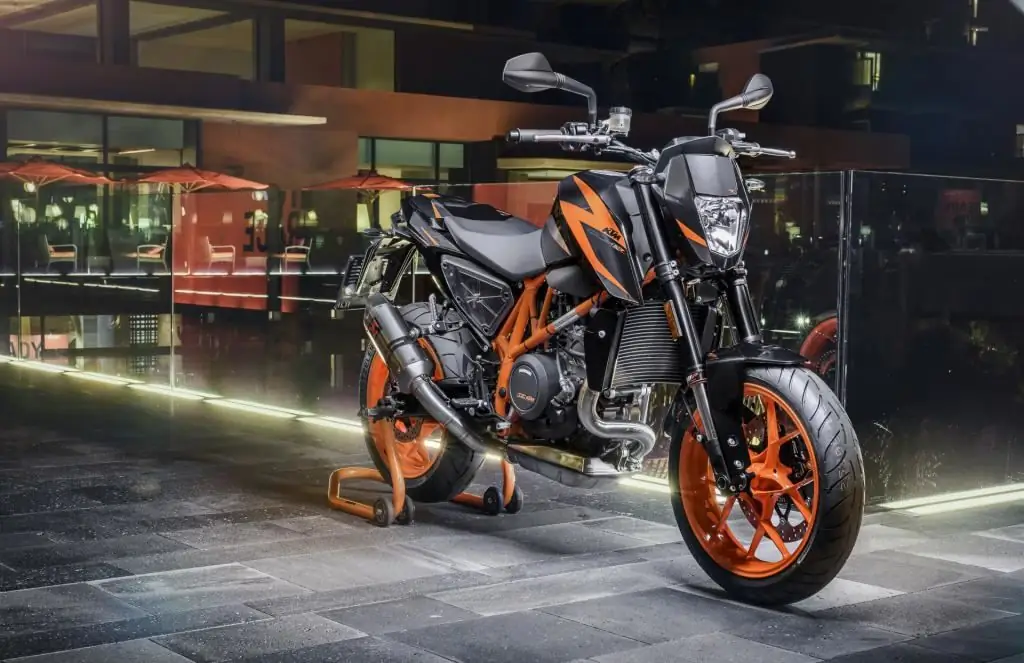2025 Author: Erin Ralphs | [email protected]. Last modified: 2025-01-22 21:14:09
The Hungarian company "Ikarus" from 1953 to 1972 produced a series of buses "Ikarus 55", designed for intercity transportation. They were mainly supplied to the socialist countries of Eastern Europe and the USSR. Modern history testifies that the Ikarus 55 Lux, designed for long-distance transportation, has become an outstanding monument of the industry of the Republic of Hungary, an example of the high professionalism of the creators of this truly legendary model.

Historical reference, origin of the name
Ikarus is a Hungarian automotive company. The main specialization is the production of buses. In the period of the 70-80s of the 20th century, it was the largest company in Europe producing a wide range of this type of transport. Legally ceased to exist in 2003.
Currently a small private structure,owning the trademark Ikarus ("Ikarus"), engaged in small-scale production, producing buses in small batches.
"Ikarus" as an enterprise begins its history in 1895, from the moment of the establishment of a blacksmith and carriage workshop in the city of Budapest. Subsequently, it was transformed into a plant producing buses in small batches, mainly for intracity transportation. Ikarus made a real breakthrough at the end of the sixties of the 20th century, when they built a large and modern plant for those times in the city of Szekesfehervar. It was designed to produce almost 15,000 buses per year. The main market for them was the Soviet Union. So in the seventies, almost 8,000 buses were delivered to the USSR annually.

In total, during the existence of the Ikarus automobile manufacturing company as a major player in the market in this area, about 150,000 vehicles for the transport of passengers were delivered to the USSR and Russia.
Icarus borrowed its name from the mythical character of Ancient Greece, Icarus. However, as the Hungarians assure, the plant did not copy the fate of this hero, did not crash, and continues to exist in conditions of fierce competition within the European Union.
The beginning of the history of the 55th model, the criteria laid down
According to historians, the most famous product of Ikarus is the Ikarus 55 Lux intercity bus, which was produced by Hungary from 1955 to 1977.
At the time of the release of this model, they were considered very comfortable, convenient, unpretentious,which predetermined a significant period of their production. They have been produced for over 20 years.
The "godfather" of the bus is the company's chief engineer, Belo Zerkovich. In his legendary model, he very successfully combined the three most important, in his opinion, criteria, which were as follows:
- Ensuring maximum comfort for passengers, which meant noise protection, soft suspension, comfortable accommodation for people and luggage, good visibility, convenient conditions for boarding and disembarking.
- Performance. The developer attributed to them cornering stability, handling, as well as speed parameters, which should be comparable with the characteristics of passenger cars.
- Economical production processes.

Developed and put into production, the Zerkovich system has allowed the company to create excellent examples of road transport designed to transport passengers for almost five decades.
Appearance, nicknames
For unusual shapes, profile, external layout "Ikarus 55 Lux" from the beginning of the issue was accompanied by enthusiastic epithets. In the media, its futuristic appearance was referred to as "cosmic".

Indeed, the bus had a very unusual profile. Structurally, "Ikarus 55 Lux" embodied the advanced, innovative developments of that time. Yes, he hasthe diesel engine was located at the rear of the bus. This arrangement made it possible to save passengers from the smell of exhaust gases. Moreover, the buses of this series were extremely reliable. They could go almost 1,000,000 km without a major overhaul.
Drivers for the unusual appearance, noisy engine, the presence of a "strange" location of a powerful headlight (on top of the windshield) called him "vacuum cleaner", "rocket". These nicknames were given because, to some extent, he looked like a very popular vacuum cleaner called "Rocket", mass-produced in the USSR.

Sometimes the 55th was called a "chest of drawers" for the unusual aft part of the bus.
In the Soviet Union buses "Ikarus 55 Lux" worked until the beginning of the 80s of the 20th century. They were gradually replaced by newer models of the Hungarian automaker, which included Ikarus 250 / 255 / 256.
Body, dimensions, speed
The body of the buses of the family "Ikarus 55 Lux" bearing type. Number of seats - 34, doors - 2, of which one is for the driver. The fuel tank of the bus is designed for 250 liters. Gross weight - 12730 kg, equipped - 9500 kg.
The technical characteristics of the "Ikarus 55 Lux" indicated that the total mass of the bus on the axle was distributed as follows: on the rear - 8480 kg, on the front - 4250 kg. The bus could carry out a full turning radius of 10.25 m. The maximum speed reached 98 km / h.
The maximum climb angle that this car could overcome was 27%. Consumptionfuel at that time was acceptable, amounted to 32 liters per 100 km. The luggage compartments of the bus could accommodate cargo up to 4.5 cubic meters.
The bus "Ikarus 55 Lux" had the following dimensions: height - 2.87 m; width 2.5 m; length 11.4 m. Ground clearance - 29 cm.
Engine
The engine of the "Ikarus 55 Lux" was located at the back. Model Csepel D-614. The engine is pre-chamber, diesel, four-stroke, six-cylinder. Cylindrical in-line arrangement. The valves were on top. Cylinder diameter 112 mm. Piston stroke 440 mm. The working volume of cylinders is 8.28 l.

The motor "Ikarusa 55 Lux" provided a compression ratio of 19. The cylinder scheme is classic: 1-5-3-6-2-4. The highest engine power at 2300 rpm was 170 horsepower.
Motor cooling liquid. Combined lubrication system. The engine weighed nearly 630 kg dry.
Transmission
The bus "Ikarus 55 Lux" was equipped with a single-disk, dry clutch. It was equipped with a five-speed, three-way manual transmission.
Steering - a system of double roller and globoidal "worm", with a gear ratio of 29. Power steering hydraulic.
Drum-type brake system, on all wheels, pneumatic drive. The parking brake is mechanical, on the rear wheels.

Among the characteristics of "Ikarus 55 Lux" it is worth noting the presenceadvanced retarder. It was a valve-type system that closed the exhaust pipe of the engine, cutting off the fuel supply. Her control was pneumatic.
The appearance of the bus, the level of comfort
The first Hungarian bus of this family was presented to the public in 1953. He immediately made a huge impression. The bus looked like a rocket on wheels. In the press, the description of "Ikarus 55 Lux" was accompanied mainly by admiring epithets. Among them were present - "swift silhouette", "extraterrestrial origin", "fins of dimensions", etc. The photos of "Ikarus 55 Lux", presented in this article, confirm these comparisons.
In the Soviet Union, buses of this type were supplied with an engine that was more powerful. They also had additional luggage space in the cabin, at the rear wall.

It should be noted that the Ikarus plant produced more than 10 modifications of buses of the 55th model. Their main difference was in the location of the doors for passengers and their number. They could have been from one to three. They differed in decoration and interior layout. "Ikarus 55 Lux" (separate copies) instead of ordinary seats were equipped with double sofas, with tables located between them, which were equipped with lamps. Users were also supplied with models that were particularly comfortable, with separate seats.
Return to minimalism
However, such excesses wereexception. "Ikarus 55 Lux" has undergone changes in the level of comfort over time towards minimalism and traditionalism. In the latest bus models of this brand, which began to be produced by the plant in the early seventies of the XX century, there were no frills. The headlights began to be located above the bumper, the windshield disappeared. The side lights have become modest. Spherical windows, which were previously mounted on the roof of the cabin, have disappeared. However, the “rockets” still stood out from other buses.

For the entire period of production, almost 3,000 Ikarus 55 Lux vehicles were delivered to the Soviet Union from Hungary.
The real legendary bus
Until now, how many such buses have survived in the world is not exactly known. There is information that no more than 20 pieces. Moreover, they are of different modifications. The largest number, of course, is in Hungary. Several "Ikarus 55 Lux" are in Germany and Estonia. Media reports: two cars remained in Ukraine.
There are only 3 living buses "Ikarus 55 Lux" in Russia. One - the property of Mosgortrans, is kept in the 15th bus depot in Moscow. The second is owned by the museum collection of the St. Petersburg enterprise Passazhiravtotrans.

The third copy of the "Ikarus 55 Lux" has been preserved at an airline in the Moscow region. It is affectionately called "Tu-55", as this bus was used exclusively by the Tupolev aviation enterprise.
Recommended:
Snowmobile "Taiga Attack": description with photo, specifications and owner reviews

Snowmobile "Taiga Attack": specifications, photos, reviews, features, pros and cons. Snowmobile "Taiga Attack": description, parameters, maintenance, operation. Overview of the snowmobile "Taiga Attack": design, device
Off-road vehicle from "Oka": photo and description, specifications

Off-road vehicle from "Oka": description, specifications, photos, recommendations, features, risks. How to make an SUV from the "Oka" with your own hands? SUV based on "Oka": modernization, manufacturing tips, operation
"KTM 690 Duke": description with photo, technical specifications, engine power, maximum speed, features of operation, maintenance and repair

The first photos of the "KTM 690 Duke" discouraged experts and motorists: the new generation lost its signature faceted shapes and double optical lenses, turning into an almost identical clone of the 125th model. However, the company's press managers diligently assured that the motorcycle had gone through an almost complete update, so it can be considered a full-fledged fourth generation of the Duke model, which first appeared in 1994
Motorcycle "Yamaha XJ6": photo and description, specifications and owner reviews

Yamaha is a world famous motorcycle manufacturer. All creations of the company are in great demand in the markets of all countries of the world. Today we will focus on the new generation Yamaha XJ6
Bus Ikarus 255: photo, specifications

Surely everyone remembers what buses were like in the USSR. Basically, these were LAZs and Ikarus. The latter were considered the real pinnacle of the automotive industry. The Hungarians made very comfortable and reliable buses. In today's article we will talk about Ikarus-255. This bus was mass-produced from 72 to 84. The machine replaced the outdated 250th model, which has been produced since the 50s. Well, let's take a closer look at this legendary bus

